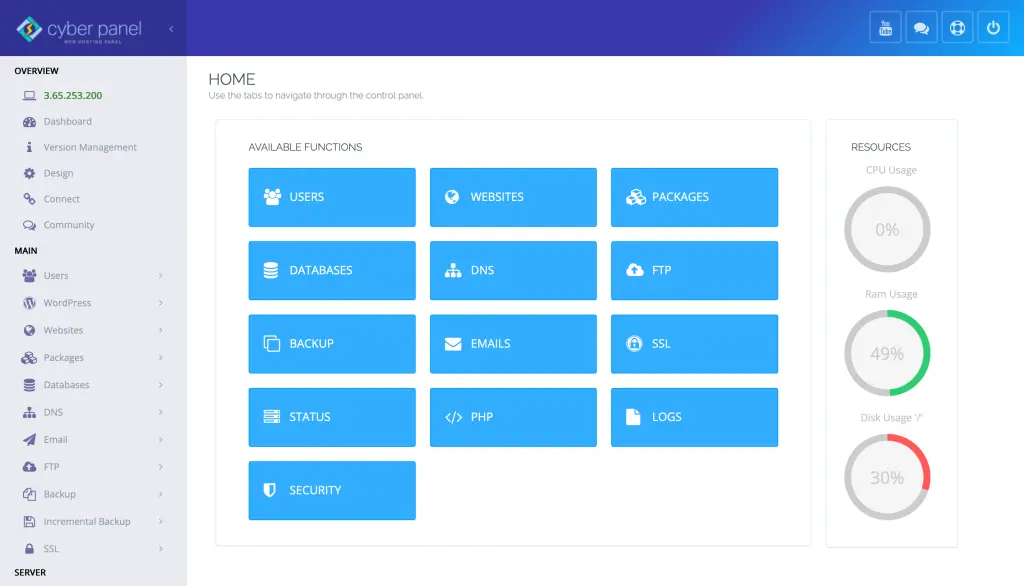Do you want to know how to set up iptables in Linux server safety? If you’re worried about unauthorized access, configuring iptables correctly is the first step toward securing your network traffic. So, iptables in Linux is a powerful utility that governs the inbound and outbound nature of network connection, which is particularly useful to control traffic flow, as well as protect your Linux systems.
Learning how to check iptables in Linux and proceed with the right iptables command in Linux will help you admins (be it beginner or advanced) to use. In this article, we examine all the underpinning blocks for configuring your iptables, as well as methods for viewing and configuring your firewall rules.
What are iptables in Linux?
Tracing back to Linux iptables — a firewall application that filters and blocks unwanted network traffic. It enables system administrators to set rules on allowing or denying incoming and outgoing network connections based on IP addresses, ports, and protocols. You can use simple Linux commands to manage iptables so your system can be protected from attacks.
Here is how you Check iptables in Linux.
Before configuring iptables, it is essential to verify the existing configuration. The following command can be used to check iptables in Linux easily:
sudo iptables -LThis will list all current iptables rules. Without rules being configured, it passes through the default policies that might allow any incoming traffic. Alternatively, you can verify the iptables status with:
Get exclusive access to all things tech-savvy, and be the first to receive
the latest updates directly in your inbox.
sudo iptables -SThis will display iptables rules in a human-readable format.
Basic Linux Iptables Commands
{Iptables commands in Linux system: firewall rules} Some most frequently used commands are as below:
List iptables Rules:
sudo iptables -L# Add a Rule to Allow SSH (port 22):
iptables | grep -i --color port 22Set Default Policies To drop all incoming and forwarded traffic and allow outgoing traffic:
Content 2 sudo iptables -P INPUT DROP sudo iptables -P FORWARD DROP sudo iptables -P OUTPUT ACCEPTSaving iptables Rules To make your iptables rules persist after reboot, run:
sudo iptables-save > /etc/iptables/rules.v4How to Set Up iptables in Linux
Configure Iptables: Drop All Incoming and Forwarded Traffic, it has the effect of reducing exposure by rejecting unauthorized connections by default:
sudo iptables -P INPUT DROP
sudo iptables -P FORWARD DROP
sudo iptables -P OUTPUT ACCEPTOpen Necessary Ports: Next, open ports needed by critical services, for example SSH (port 22) access:
sudo iptables -A INPUT -p tcp --dport 22 -j ACCEPTYou could append other ports accordingly (for example: HTTP, HTTPS, FTP, etc.).
Check iptables Rules: After setup, check the rules to make sure everything is configured correctly:

sudo iptables -LSave Configuration: Use the command to make your settings persistent after system reboot:
sudo iptables-save > /etc/iptables/rules.v4Role of CyberPanel in Managing iptables

CyberPanel is a powerful web hosting control panel, tightly integrated with iptables. CyberPanel allows you to customize your firewall settings through the graphical interface. This makes configuring and managing iptables rules more straightforward for administrators, who do not have to depend on the command line to interact with iptables (although advanced users can always make changes to iptables via the command line if they deem it necessary).
CyberPanel automates server management functions such as automatic updates and security patches to minimize the risk of vulnerabilities.
FAQs: How to Set Up iptables in Linux
1. Difference between iptables and firewalld?
If unsure which command to use, Iptables is a command-line firewall utility, whereas firewalld is a dynamic firewall management tool that uses zones to define the trust levels of network connections. Both can also be used for securing Linux servers.
2. Is it possible to set up iptables even without root privilege?
You need root (superuser) access to set up iptables and change firewall settings.
3. How to check iptables in Linux if installed?
Check if iptables is installed by running sudo iptables -L if you get the message that there are no iptables we then install iptables using your package manager.
4. Are iptables enabled for NAT (Network Address Translation)?
Yes, you can set NAT up with iptables and manage how packets flow from one network to another.
Wrap-Up: Own Your Linux Security
So far, we have learned how to set up iptables in Linux. Firewalling your Linux system via iptables is perhaps one of the most fundamental steps to handle unauthorized access and network threats to your server. By properly tuning it so that just valid traffic gets to your server. By reading this article, you will know how to configure iptables in Linux, how to check iptables, and the basic iptables commands and their use. And with CyberPanel, you can leverage its simple-managed interface on how to manage firewall rules and secure server machines. Be proactive.
Do not wait for a security breach! Start configuring your firewall now and protect your system from potential threats!



